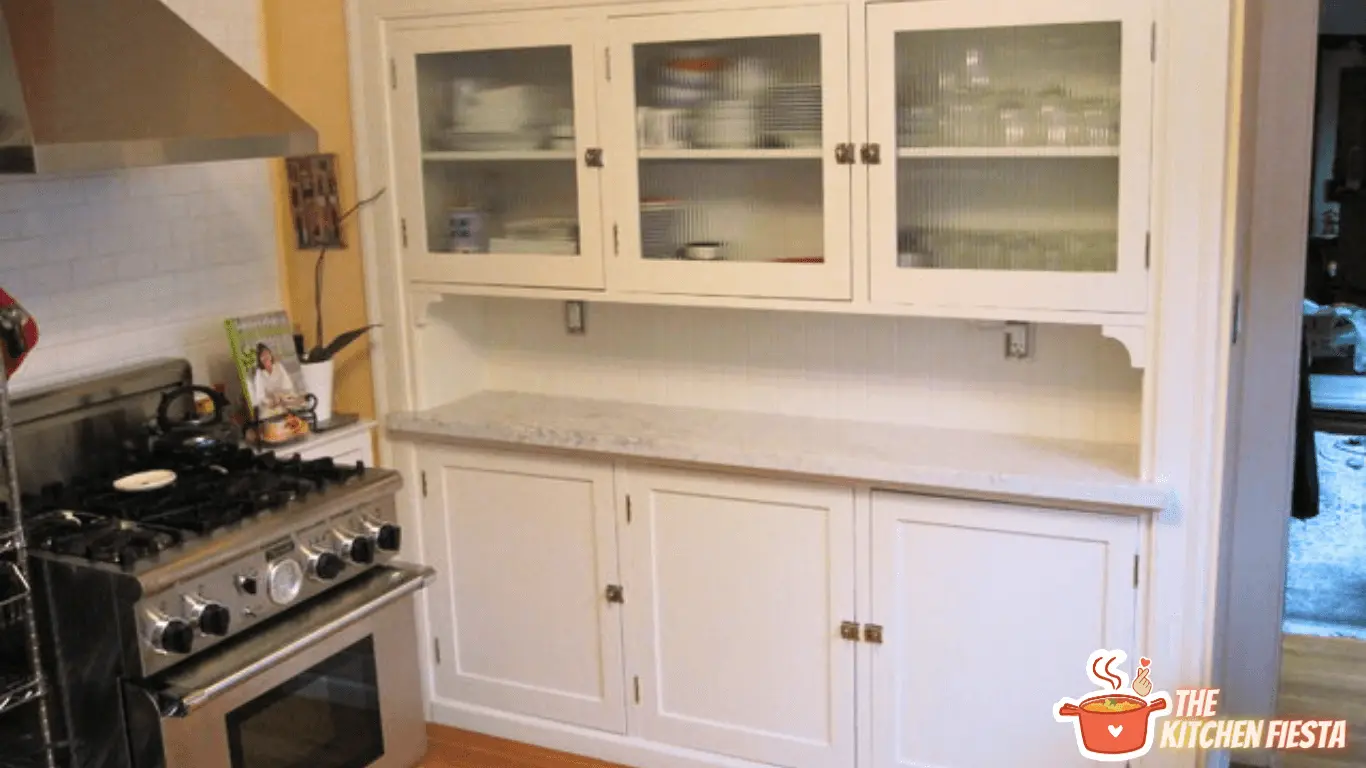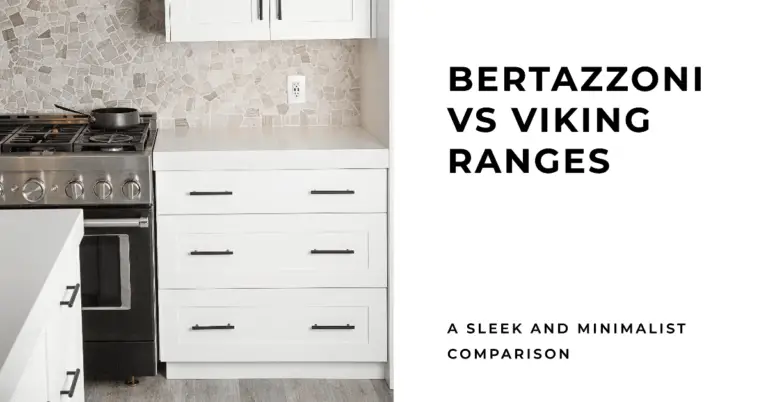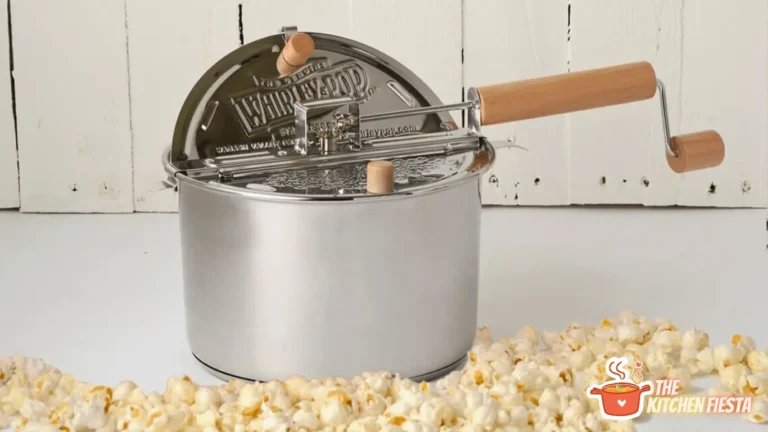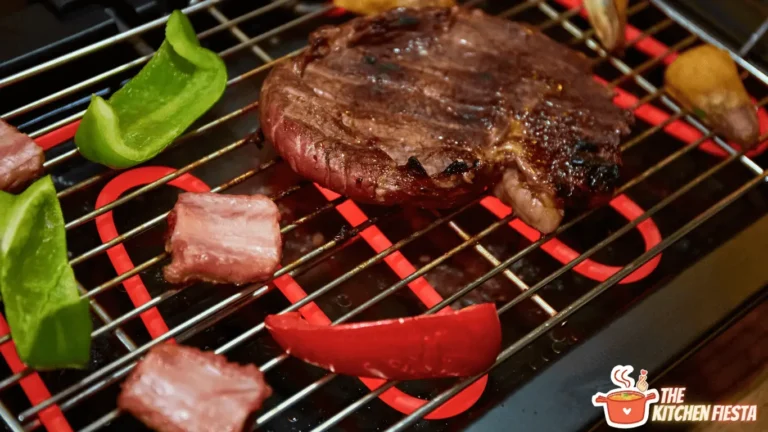What is a Stove Hutch? A Guide to This Kitchen Storage Solution

A stove hutch is a furniture designed to be placed over a stove. It is a versatile piece of furniture that can add functionality and style to a kitchen. The hutch typically has shelves or cabinets above the stove, which can store pots, pans, and other cooking supplies. It may also have drawers or cabinets below the stove, which can store food items such as spices, flour, and sugar.
Stove hutches come in a variety of styles, materials, and sizes. Some are made of wood, while others are made of metal or other materials. They can be designed to match the decor of a kitchen or to stand out as a statement piece. Some stove hutches are designed to be freestanding, while others are built into a kitchen’s cabinetry. Regardless of the style or material, a stove hutch can be a great way to add storage and counter space to a kitchen while creating a focal point.
Definition of a Stove Hutch
A stove hutch is a piece of furniture designed to be placed over a stove. It is usually made of wood and has shelves, cabinets, or both above and below the stove. The upper portion of the hutch is used for storing pots, pans, and other cooking supplies, while the lower portion is used for storing food items such as spices, flour, and sugar.
Stove hutches come in various sizes and styles, ranging from small, simple designs to larger, more elaborate ones. Some hutches are built into the kitchen cabinetry, while others are freestanding and can be moved around as needed.
One of the main benefits of a stove hutch is that it provides additional storage and counter space in the kitchen. This can be particularly useful in smaller kitchens where space is premium. Additionally, a stove hutch can add a decorative element to the kitchen, as it can be customized to match the existing décor.
History of Stove Hutches
Stove hutches have been around for centuries, dating back to the 18th century. They were primarily used as a storage solution for cookware, utensils, and food items. They were often placed above or next to the stove for easy access.
In the early days, stove hutches were made of wood and were often quite simple in design. They were typically built into the wall and featured a few shelves or cabinets for storage. Over time, stove hutches became more elaborate, with intricate carvings and decorative elements added to their design.
During the 19th and early 20th centuries, stove hutches became a staple in many American kitchens. They were often built into the cabinetry or were freestanding pieces of furniture. Many featured glass doors, allowing the cook to see the contents of the hutch easily. Some even had built-in spice racks and other features to make cooking more efficient.
As technology advanced, stove hutches began to take on new forms. In the mid-20th century, many homes were outfitted with electric stoves and stove hutches adapted to accommodate this new technology. They were often built with electrical outlets and lighting, making them even more functional.
Today, stove hutches are still a popular choice for many homeowners. While they may not be as common as once, they offer a convenient storage solution for cookware and other kitchen essentials. Whether built into the cabinetry or freestanding, stove hutches remain a timeless and functional addition to any kitchen.
Types of Stove Hutches
Stove hutches come in different types. This section will discuss the two main types of stove hutches: freestanding and built-in stove hutches.
1. Freestanding Stove Hutches
Freestanding stove hutches are standalone furniture pieces that can be moved around easily. They are not attached to the wall or the stove and can be placed in any part of the kitchen. Freestanding stove hutches are ideal for those who want flexibility in their kitchen layout.
Freestanding stove hutches come in different styles and sizes. Some have open shelves, while others have cabinets. Some have a combination of both. They can be made of different materials, such as wood, metal, or glass. Some freestanding stove hutches also have wheels, making them easier to move around.
2. Built-In Stove Hutches
Built-in stove hutches are attached to the wall or the stove. They are designed to fit seamlessly into the kitchen layout, giving a more integrated look. Built-in stove hutches are ideal for those who want a more permanent fixture in their kitchen.
Built-in stove hutches can be custom-made to fit the specific dimensions of the kitchen. They can also be designed to match the existing cabinetry and decor. Built-in stove hutches can have open shelves, cabinets, or a combination. They can also be made of different materials, such as wood, metal, or glass.
The choice between freestanding and built-in stove hutches depends on personal preference and kitchen layout. Freestanding stove hutches offer more flexibility, while built-in stove hutches offer a more integrated look.
Materials Used in Stove Hutches
Stove hutches come in various materials, each with unique benefits and drawbacks. Wooden and metal stove hutches are two of the most common materials used.
1. Wooden Stove Hutches
Wooden stove hutches are popular due to their warm, traditional look and durability. They are typically made from solid wood, such as oak, maple, or cherry, and can be stained or painted to match any kitchen decor.
One of the benefits of wooden stove hutches is that they are easy to repair if they become scratched or damaged. Simply sanding and refinishing the affected area can restore the hutch to its original condition. Wooden stove hutches are also relatively lightweight, making them easy to move if needed.
However, there may be better choices than wooden stove hutches for high humidity or moisture kitchens, as the wood can warp or rot over time. They may also be more prone to scratches and dents than metal stove hutches.
2. Metal Stove Hutches
Metal stove hutches are another popular choice due to their sleek, modern look and durability. They are typically made from stainless steel or aluminum. They can be powder-coated in various colors to match any kitchen decor.
One of the benefits of metal stove hutches is that they are easy to clean and maintain. They are also resistant to scratches, dents, and moisture, making them a good choice for high-humidity kitchens.
However, metal stove hutches may be warmer and more inviting than wooden stove hutches, and they can be more expensive. They may also be more prone to fingerprints and smudges, detracting from their appearance if not cleaned regularly.
Benefits of a Stove Hutch
A stove hutch is a versatile piece of furniture that can provide various benefits to any kitchen. Here are some of the key benefits of using a stove hutch:
1. Increased Storage Space
One of the primary benefits of using a stove hutch is its additional storage space. With shelves, cabinets, and drawers, a stove hutch can help keep your cooking supplies organized and within easy reach. This can be especially helpful in smaller kitchens where storage space is at a premium.
2. Easy Access to Cooking Supplies
You can easily access everything you need while cooking by keeping your cooking supplies in a stove hutch. This can help streamline the cooking process and make preparing meals quickly and efficiently easier.
3. Decorative Element
A stove hutch can also be a decorative element in your kitchen. With various styles and designs available, a stove hutch can complement your existing decor and add a touch of elegance to your kitchen.
4. Protects Your Stove
A stove hutch can also protect your stove from damage. Placing a stove hutch above your stove can prevent grease and other cooking debris from accumulating on your stove’s surface. This can help extend the life of your stove and keep it looking like new.
5. Versatility
Finally, a stove hutch is a versatile piece of furniture that can be used for a range of purposes beyond just storing cooking supplies. For example, you can store dishes, glasses, or other kitchen items using a stove hutch. This can help free up space in other kitchen areas and make it easier to keep everything organized.
Considerations When Buying a Stove Hutch
When looking for a stove hutch, there are a few essential factors to consider to ensure you get the best one for your needs. Here are some considerations to keep in mind when buying a stove hutch.
1. Size and Space
The first thing to consider when buying a stove hutch is the size and space available in your kitchen. It would help if you made sure that the hutch you choose fits the dimensions of your stove and the available space in your kitchen. You must also consider how much storage space you need and how many shelves or cabinets you want in your hutch.
2. Style and Design
The style and design of your stove hutch are also essential factors to consider. You want to choose a hutch that matches the style and decor of your kitchen. Many styles and designs of stove hutches are available, from traditional to modern, so take your time to find the one that best suits your taste.
3. Budget
Finally, you need to consider your budget when buying a stove hutch. Stove hutches can range in price from a few hundred dollars to several thousand dollars, depending on the size, style, and materials used. Determine your budget before shopping and stick to it to avoid overspending.
How to Maintain a Stove Hutch?
To ensure a stove hutch’s longevity, following some basic maintenance tips is essential. Here are some ways to keep your stove hutch in good condition:
- Clean the stove hutch regularly with a soft cloth or sponge, mild soap, and water. Avoid using harsh chemicals or abrasive cleaners that can damage the finish.
- Wipe up spills and stains immediately to prevent them from setting in and causing permanent damage.
- Avoid placing hot pots and pans directly on the stove hutch surface, which can cause discoloration or warping.
- Keep the stove hutch away from direct sunlight or heat sources, which can cause fading or cracking.
- Check the hinges, knobs, and other hardware regularly to ensure they are tight and functioning properly. Replace any damaged or worn parts as needed.
- Consider using a protective cover to prevent dust and debris from accumulating on the stove hutch when not in use.
- If the stove hutch has glass doors or shelves, clean them with a glass cleaner and a soft cloth to prevent streaking or scratching.
Following these simple maintenance tips, you can keep your stove hutch looking great and functioning correctly for years.
Conclusion
In conclusion, a stove hutch is a piece of furniture designed to be placed over a stove. It typically has shelves or cabinets for storing pots, pans, spices, and other cooking supplies. Some stove hutches also have built-in drawers or cupboards for dishes and silverware.
A stove hutch is an excellent addition to any kitchen as it provides extra storage space while adding a decorative touch to the room. Hutches are often made of timber and come in various styles to suit different tastes and decor.
When choosing a stove hutch, it’s essential to consider the size of your stove and the amount of space you have in your kitchen. You also want to ensure that the hutch is made of high-quality materials and sturdy enough to hold all of your kitchen essentials.
A stove hutch is a practical and stylish solution for anyone looking to add extra storage to their kitchen. With the suitable hutch, you can keep your cooking supplies organized and easily accessible while enhancing your kitchen’s overall look and feel.
Frequently Asked Questions
What is the purpose of a range hood?
A range hood, stove hood, or vent hood is a ventilation system installed above a stove or cooktop to remove smoke, steam, and odors from the kitchen. The hood typically consists of a fan and a filter designed to capture and filter out these unwanted cooking byproducts. A range hood aims to improve indoor air quality and prevent the buildup of harmful pollutants in the kitchen.
What are the different styles of range hoods?
There are several different styles of range hoods, including wall-mounted, island-mounted, under-cabinet, and downdraft. Wall-mounted range hoods are installed against the wall above the stove, while island-mounted range hoods are installed above a stove on an island. Under-cabinet range hoods are installed underneath a cabinet above the stove, while downdraft range hoods are installed behind or next to the stove and pull smoke and steam down through the cooktop.
What is the difference between a vent hood and an insert?
A vent hood is a complete range hood system that includes the hood, fan, and ductwork. At the same time, an insert is a fan and filter system designed to be installed inside an existing range hood enclosure. Inserts are typically less expensive than vent hoods and are a good option if you already have a range hood in place but need to upgrade the fan or filter.
What is the cabinet above the stove called?
The cabinet above the stove is called a stove hutch or range hood. It is typically used to store pots and pans, spices, and other cooking supplies and is designed to be placed over a stove.
What is a convertible range hood?
A convertible range hood is a type of range hood that can be used as either a ducted or ductless system. Ducted range hoods vent air outside the home through ductwork. In contrast, ductless range hoods use a filter to remove smoke and odors from the air before recirculating it back into the kitchen.
What is a ducted under-cabinet range hood?
A ducted under-cabinet range hood is a type of range hood that is installed underneath a cabinet above the stove and vents air to the outside of the home through ductwork. These range hoods are typically more effective at removing smoke, steam, and odors from the kitchen than ductless range hoods.





